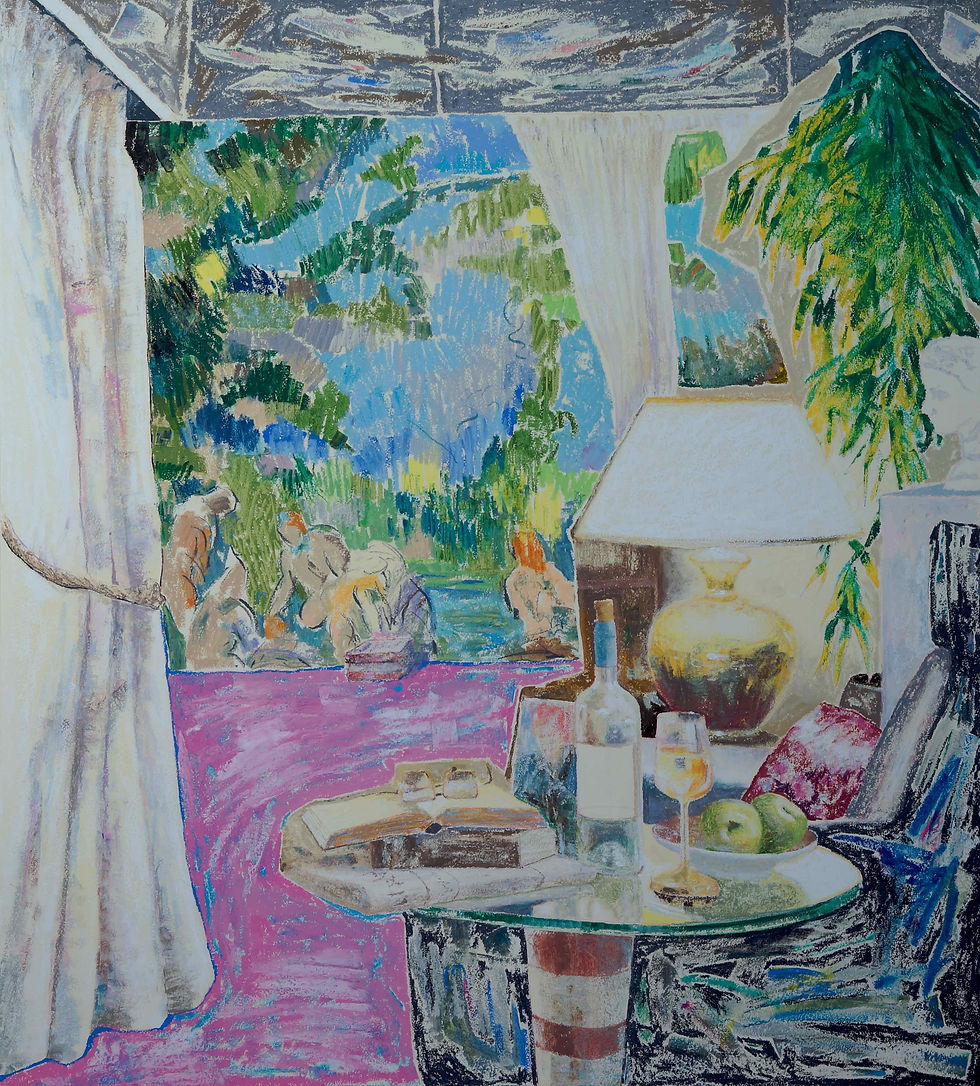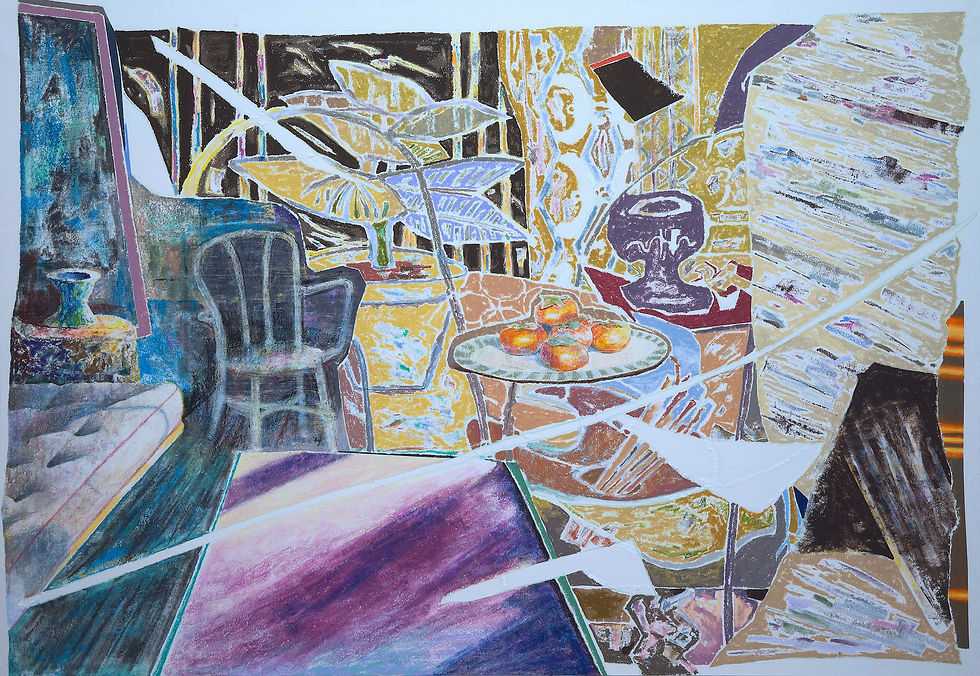





































李宜亞 Lee Yiya 台灣 b.1986
2012年畢業於新竹教育大學藝術教育與創作碩士班 創作組,現任國立清華大學藝術與設計學系兼任講師。2022年獲選台北藝術博覽會【Made In Taiwan-新人推薦特區】。
2021年的上半年,隨著全球疫情的來襲,不論是什麼樣的生活,人們被迫濃縮在各自的私密空間,壓縮著以往的生活情調,因此,藝術家在作品裡保留剪貼拼揍的痕跡感,企圖為空間保留更多提示,並在作品裡表現出生活中的一角,可能是客廳、書桌前、床邊、浴室,呈現個人情感對於空間的回應,並成為疫情之下的生活寫照與新面貌。
隨著全球疫情解封後的新系列作品,在創作過程中,藝術家持續對「家」的元素進行拼貼、重組與空間調度,這些行為留下了明顯的修改痕跡。作品始終圍繞著空間的表現,通過剪裁、蒐集各種角落——例如精美的居家雜誌、租屋網站下載列印的空間圖、甚至是美術史中的經典作品——這些「二手空間」成為藝術家創作的素材與對象。透過拆解與重構,切割的邊緣變得格外鮮明,觀者的視線會沿著這些切割線條遊走,彷彿在探索一張全新的地圖。這些邊緣,也成為視覺的引導,一個新維度的空間似乎從紙張邊緣湧現。藝術家透過真實與虛幻的交疊,創作出一系列有趣而獨特存在的畫面。
Lee Yiya, born in 1986 in Taiwan, gratulated from Hsinchu University of Education as M.F.A, now giving lecture in National Tsing Hua University Art and Design department. In 2022, selected for Art Taipei 'Made in Taiwan- New Star section'.
The series about "The Place to Turn" was produced in the first half of 2021. With the onset of the global epidemic, no matter what kind of life we live, we are forced to condense in our own private space, compressing the mood of our past life, so , the artist continued the space works of the previous year's solo exhibition series, retaining the traces of clipping and beating in the works, trying to retain more hints for the space, and showing a corner of life in the works, which may be the living room, the desk, the bed Edges and bathrooms, showing the response of personal emotions to the space, and becoming a new look for life under the epidemic.
With the new series of works created after the global epidemic was lifted, during the creative process, the artist continued to collage, reorganize and spatially arrange the elements of "home", and these actions left obvious traces of modification. The works always revolve around the expression of space. By cutting and collecting various corners - such as exquisite home magazines, space maps downloaded and printed from rental websites, and even classic works in art history - these "second-hand spaces" become the materials and objects of the artist's creation. Through disassembly and reconstruction, the edges of the cuts become particularly distinct, and the viewer's eyes will wander along these cut lines, as if exploring a brand new map. These edges also become visual guides, and a new dimension of space seems to emerge from the edge of the paper. The artist creates a series of interesting and unique images through the overlap of reality and illusion.

